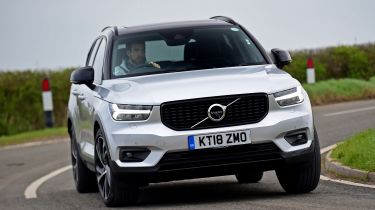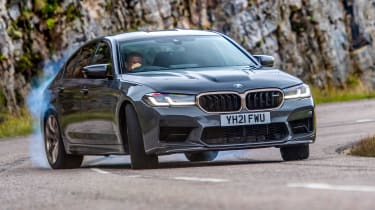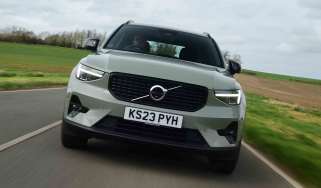What is ESP, and ESC on a car?
Since 2014, every new car in Europe has been fitted with Electronic Stability Control – but what is ESC, and what is ESP for that matter?

Electronic Stability Control (ESC), also known as Electronic Stability Program (ESP), is a safety feature installed on all modern cars that you might not even be aware of. It’s one of the best modern car safety features, because unlike airbags and seatbelts that are there to protect you in the event of a crash, ESC works quietly in the background to prevent loss of control that can lead to a collision in the first place.
Modern cars are much safer than they used to be, and research shows that ESC and ESP systems do help to keep motorists safe. UK statistics suggest that the chance of being involved in a fatal accident can be reduced by as much as 25 percent when driving a car equipped with ESP. Other studies show even more positive signs, with researchers in Sweden claiming that drivers of cars with ESP are 32 per cent less likely to be involved in a fatal crash when driving in poor weather conditions.
Electronic Stability Control clearly works, which is why all new cars sold in Europe have been legally required to have the technology installed since 2014.
How do ESP and ESC work?
Modern cars all have such a wide range of complex electrical systems, most of which can be hard to understand because of their confusing acronyms. It’s an even bigger minefield with a variety of acronyms used to refer to the same thing, depending on the manufacturer.
You might hear ESP (Electronic Stability Program) also referred to as ESC (Electronic Stability Control), VSC (Vehicle Stability Control), VSA (Vehicle Stability Assist) or DSC (Dynamic Stability Control). Some manufacturers even refer to these systems with their own branding, such as Volvo’s DSTC (Dynamic Stability and Traction Control) or Porsche’s PSM (Porsche Stability Management). Now you know what these acronyms stand for, here’s how the safety technology works.
Adding a third dimension to ABS and Traction Control
ESP works with other preventative safety systems such as ABS (Anti-lock Braking System) and TCS (Traction Control System). In their simplest form, these two systems work to keep the car under control when slowing down (ABS) or accelerating (TC), automatically controlling the brakes (and throttle in the case of traction control) to stop the wheels either locking up or spinning. Usually these systems are most effective when the car is travelling in a straight line, or longitudinally.
ESP adds an extra dimension, as it intervenes laterally, working to correct unwanted sideways motion that could otherwise result in serious understeer or oversteer to keep the car steering on your chosen line through a corner. At least up to a point, as statistics suggest ESP can only avert 80 percent of skidding incidents - although with skidding involved in 40 percent of fatalities on the road, it’s easy to see why ESP radically improves outcomes. Even so, it’s worth keeping Scotty of the USS Enterprise’s words in mind: ‘Ye cannae change the laws of physics!’

Extra stability while cornering with ESC
As ESP provides an extra layer of safety on top of ABS and TCS, you won’t be surprised to learn it uses much of the hardware from those systems to operate.
Using sensors to measure the speed of individual wheels, as well as information from lateral acceleration sensors and yaw-rate sensors, the ESP control unit is constantly monitoring the car’s sideways movements and relating them to the degree of steering wheel inputs.
If and when the car doesn’t respond to a steering input as expected – or if a steering or acceleration input is itself so great it begins to unsettle the car – then the ESP will brake wheels individually in an attempt to steer the car safely along the line the driver intended.
Added benefits of ESC
Because ESC is able to brake the car’s wheels independently of the pedal being applied, it opens the door to various other safety technologies. These include Brake Assist, where braking distances are reduced if the car senses the driver isn't braking as hard as they might in an emergency situation, and Hill Hold Control. The latter works by keeping the brakes on for a couple of seconds after the brake pedal is released during a hill start, thus stopping the car from rolling back.
Commercial vehicles fitted with ESC can have additional sensors that measure load weight and position, and adapt the ESC responses accordingly. This maximises the stabilising effect of ESC interventions however a vehicle is loaded, and ESC responses can even adjust ‘mid-incident’, should a load shift during cornering or braking.
ESP also provides a cheap and efficient tyre pressure monitoring system. Because it measures individual wheel speeds, ESP can tell if a tyre is losing pressure as it will affect the rotation speed of that wheel only.
Now you know what ESP and ESC is, read about our Driver Power top 10 best cars for safety features...






